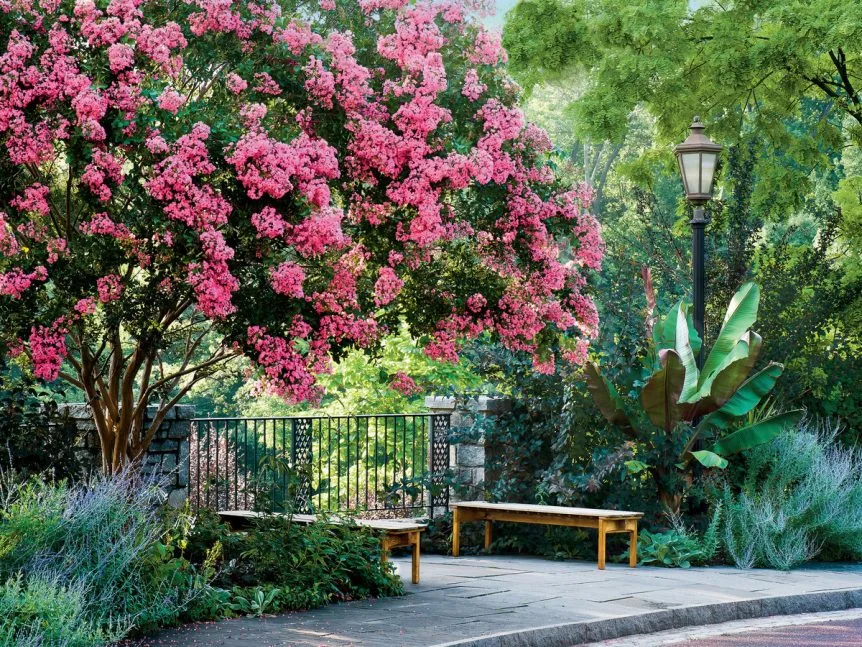ORIGINAL POST MADE BY OUR FRIENDS AT THE GOOD EARTH NURSERY.
This is a well debated issue and one that plays out differently all over town. Some of us even call the severe pruning of crapemyrtles ‘crape murder’! Here are some facts to base your pruning practices on:
- Pruning of tree crapemyrtles is optional; if the plant is in the correct place, let it grow.
- If the plant is improperly placed and gets too large for its current position, consider transplanting it before a severe pruning. These plants transplant very well! A severe pruning will result in a ‘knee’ and will result in many smaller weak limbs shooting out from the knee. If cut in the same place each year, the plants develop a nob on the end which is particularly unsightly in the winter. Pruning lower limbs that are less than a pencils’ width in diameter is completely acceptable since this will not leave any scars.
- If you do choose to prune your crapemyrtles, pruning should take place in February to avoid winter injury.
- Pruning is NOT necessary for blooming. The seed heads from last year can remain on the plant all year, and you will still get good blooming in the current year although not as large and profuse.
- Crapemyrtles come in all sizes; harsh pruning of dwarf crapemyrtles is acceptable and will not result in ‘knees’.
- As a bonus, pruning correctly is much less work than incorrectly pruning!
So, in conclusion, crape myrtles trees are usually grown as small trees with 3 to 5 trunks that are kept free of small limbs up on the lower part of the tree (up to 2/3 of the height). Thinning of limbs every few years will encourage new growth and blooming but remember to prune only limbs that are less than a pencils’ width in diameter. While the trees are young, the tips of the small limbs can be pruned off (again only those a pencil width diameter or less). As the tree grows, it become difficult and even dangerous to prune the top and it’s not necessary anyway.



Comments (0)
Thanks for your comment!
Thanks for your feedback! Your comments have been successfully submitted! Please note, all comments require admin approval prior to display.
Error submitting comment!
There is a problem with your comment, please see below and try again.